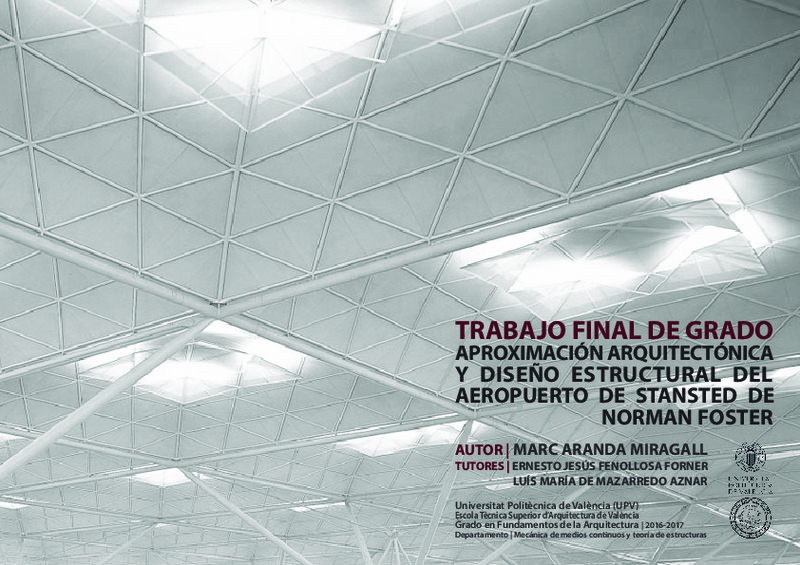|
Resumen:
|
La nueva terminal del Aeropuerto de Stansted, proyectada por Foster Associates en 1981, es considerada una de las mejores obras de Sir Norman Foster en la década de los ochenta. Dicha terminal, con un arquitecto apasionado ...[+]
La nueva terminal del Aeropuerto de Stansted, proyectada por Foster Associates en 1981, es considerada una de las mejores obras de Sir Norman Foster en la década de los ochenta. Dicha terminal, con un arquitecto apasionado de la aviación, se llevó a cabo con el pretexto de devolver al transporte aéreo la emoción de la que gozaban sus pasajeros antes de subir al avión en los años veinte. De la misma manera, sentó las bases de cómo serían las terminales de las grandes estaciones de transporte venideras.
El esquema proyectual de la terminal es claro y completamente representativo de Sir Norman Foster: la separación por niveles de las distintas funciones que puedan desarrollarse en un edificio, la piel transparente que ofrece la relación directa del interior y exterior, la grandiosa importancia con la que mima a la estructura y por la cual Foster apuesta en cada proyecto por superarse en lo que a tecnología se refiere y por último la relación constante con la naturaleza y el entorno que Foster siempre trabaja con detalle.
El proyecto presenta una dualidad estructural y constructiva la cual, íntimamente ligada con la separación por niveles, da como resultado una estructura metálica formada por árboles estructurales que sustentan una cubierta de cúpulas trianguladas ligeras y una estructura de hormigón formada por el forjado reticular aligerado y los soportes de hormigón, los cuales trabajan independientemente entre ellas.
Tras el estudio del edificio se propone un modelo estructural simplificado para posteriormente conocer las solicitaciones y deformaciones del edificio mediante el análisis y el cálculo proporcionado por el software informático Architrave y pudiendo finalmente elaborar una serie de conclusiones verídicas y razonadas con las que determinar el dimensionamiento más adecuado para el conjunto de la estructura.
[-]
The new Stansted Airport terminal, designed by Foster Associates in 1981, is considered one of the Norman Foster¿s best projects in the eighties. This terminal, with a passionate aviation architect, was carried out under ...[+]
The new Stansted Airport terminal, designed by Foster Associates in 1981, is considered one of the Norman Foster¿s best projects in the eighties. This terminal, with a passionate aviation architect, was carried out under the pretext of returning to air transport the emotion enjoyed by its passengers before boarding the plane in the 1920s. In the same way, it laid the foundations of how would be the terminals of great transport stations to come.
The design of the terminal is clearly and completely representative of Sir Norman foster: the separation by levels of the different functions that can be developed in a building, the transparent skin that offers the direct relation between the interior and the exterior, the great importance with which pamper to the structure and by which Foster bets on every project to be overcome in terms of technology and finally the constant relationship with nature and the environment that Foster always works in detail.
The project presents a structural and constructive duality which, intimately linked with the separation by levels, results in a metallic structure formed by structural trees than support a roof of light triangular domes and a concrete structure formed by the concrete waffle slab and de concrete pillars, which work independently between them.
After the study of the building a simplified structural model is proposed to later know the requests and deformations of the buildings through the analysis and calculation provided by the computer software called Architrave and can finally elaborate a series of veridical and reasoned conclusions with which to determine the most dimensioned suitable for the whole structure.
[-]
|







